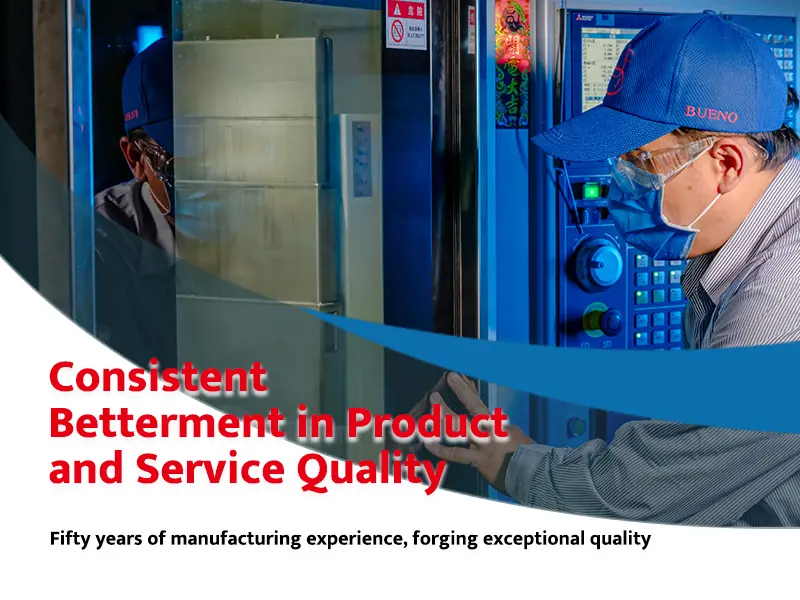PFA Lined Introduction
BUENO's PFA-lined valves are resistant to corrosion and guarantee zero leakage. They are widely accepted in semiconductor, microelectronics, pharmaceutical, food and beverage, petrochemical, refining, biochemical, cosmetics, and high purity water industries.
►What is a Transfer Molding Liner?
Transfer molding is a type of molding method that evolved from compression molding. It includes the heating and cross-linking process, which are conducted in two separate locations. Transfer molding begins by melting the plastic material, such as PFA (polyfluoroalkyl/fluoropolymers), in the separation chamber. The molten plastic is then injected into a mold to form the end component.
If the component has a complex dimensional design, using compression molding may impair the design. This is why many shops choose transfer molding over compression molding. There are two types of transfer molding: pot transfer molding and plunger molding.
►Features of Transfer Molding PFA Liner
- The PFA liner is made using transfer molding and injection molding. This method prevents pinholes, cracks, swelling, degradation, and ablation. The Dovetail design enables the PFA liner to firmly attach to the valve body, preventing possible peeling, distortion, and shifting.
- Double sealing valve body design. The protection provided by the soft sealing and metal sealing prevents leakage caused by aging and degradation of the PFA liner. The metal sealing also provides reinforcement to the metal structure and corrects flange distance orientation.
- Excellent chemical resistance. The entire internal surface of the valve is covered by a 1.5mm to 3mm thick PFA liner, which prevents corrosion and permeation from chemicals, solvents, acids, and alkali.
- The mark on the anti-blowout stem helps the user to identify the current state of the valve. The valve is open when the mark is parallel with the valve, closed when they are perpendicular to each other.
- PFA has low friction, which grants the valve low torque and ease of operation.
- All our PFA-lined products are water-free and oil-free. Higher product purity is upon request.
- Transfer molding ensures precise wall thicknesses even at tight radii and undercuts. It does not require any secondary finishing processes other than deburring and flange surface smoothening. However, the evenness of the wall thickness is susceptible to the complexity of the part design.

►Features of PFA liner
For years, fluoropolymers have played a significant role in the chemical and chemical processing-related industries. The material protects the equipment against a wide range of corrosive substances because it has better chemical resistance and thermal stability than other plastics.
Compare to PTFE, PFA has the equivalent thermal and chemical resistance while superior in processability, translucency, permeation resistance, and mechanical strength.
PFA is preferable to PTFE as the lining material because it is less easy to line parts with complicated shapes, such as valves and pumps, with PTFE (Teflon®). PFA on the other hand is more processable and can achieve better lining quality.
►Applications
- Highly corrosive non-acidifying acids, such as chloride, sulfuric acid, wet halogen gases, phosphoric acid, acetic acid, and fluoric acid.
- Fluid transportation systems where the interaction between acids and alkalis occurs.
- Semiconductor and pharmaceutical manufacturing processes where organic compound precipitation and metal ion leaching take place.

►More PFA Lined Products
*We reserve the right to amend, interpret the design, information and/or specifications of all content without notice.*


